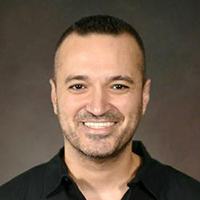Hany Abdel-Khalik - Purdue University
Students: Spring 2026, unless noted otherwise, sessions will be virtual on Zoom.
Covert Cognizance: A New Paradigm for Modeling and Monitoring
Nov 10, 2021
Abstract
Can industrial systems be made self-aware, alert operators to misuse while cleverly lulling capable adversaries into a false sense of superiority? Achieving these goals forms the focus of covert cognizance (C2). The C2 paradigm is an active cyber defense that aims to serve as an additional layer of physical process defense against highly sophisticated attacks such as advanced persistent threats where the attack vector has privileged access at the human-system interface level, representing the top of the hierarchy in terms of component access and sophistication. C2 perturbs systems in a manner that induces cognizance by storing incorruptible information about the process such as its execution history in the process itself. It does so in a covert manner by exploiting the vast redundant space inherent to dynamical systems without the introduction of additional variables that may leave a footprint. Moreover, the perturbations are designed to be impervious to pattern-detection techniques like AI and ML to further reinforce the covertness requirement. This work falls under the broad framework of cyber-informed engineering approach adopted by the nuclear community.About the Speaker

Ways to Watch

Watch Now!
Over 500 videos of our weekly seminar and symposia keynotes are available on our YouTube Channel. Also check out Spaf's YouTube Channel. Subscribe today!- Upcoming
- Past Seminars
- Previous Speakers
- Open Dates (Fall/Spring)
- Attending the Seminar
- About the Weekly Seminar
- CPE Credit Information (PDF)
- Join our Mailing List


